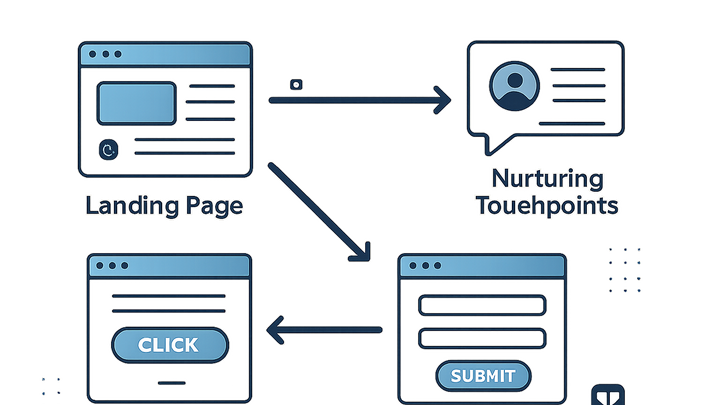Published on 2025-06-29T22:18:16Z
What is Lead Flow? Examples and Best Practices
Lead Flow refers to the strategic orchestration of touchpoints and pathways designed to guide website visitors toward becoming qualified leads. It maps out how users navigate through entry points, interact with calls-to-action (CTAs), and complete micro- and primary conversions. A well-defined Lead Flow optimizes each step to reduce friction, enhance user experience, and ultimately increase conversion rates. In practice, it includes elements such as landing pages, form interactions, follow-up communications, and nurturing sequences. By analyzing and refining Lead Flow, businesses can identify drop-off points and improve overall lead generation performance. Tools like Prevue.me provide actionable critiques on CRO, UX, SEO, and accessibility to maximize lead generation potential.
For example, a simple CTA button in HTML:
<a href="https://yourwebsite.com/lead-form" class="cta-button">Get Your Free Audit</a>
Lead flow
The sequence of web touchpoints guiding visitors to become leads, optimized for conversions, UX, and SEO.
What Constitutes a Lead Flow?
Lead Flow is composed of distinct stages that map the visitor’s journey. Each stage focuses on guiding users smoothly toward your key conversion goals.
-
Entry points
Where visitors first engage with your site, such as the homepage, blog posts, or ad landing pages.
- Homepage and landing pages:
Optimize for clarity, relevance, and persuasive messaging.
- Blog posts:
Include contextual CTAs within content to guide readers towards next steps.
- Ad campaigns:
Ensure messaging consistency between ads and landing experiences.
- Homepage and landing pages:
-
Conversion paths
The sequence of actions or pages users navigate to complete a goal.
- Micro-conversions:
Small engagements like newsletter sign-ups or content downloads.
- Primary conversions:
High-value actions such as demo requests or purchases.
- Micro-conversions:
-
Nurturing touchpoints
Follow-up interactions designed to re-engage and educate leads.
- Email drip campaigns:
Automated emails that deliver value and build trust over time.
- Retargeting ads:
Serve personalized ads to previous visitors to bring them back.
- Email drip campaigns:
Why Lead Flow Matters in CRO, UX, and SEO
An optimized Lead Flow aligns business goals with user needs, delivering smoother experiences and better search performance.
-
Boosting conversion rates
A clear, frictionless flow increases the likelihood of form completions and goal achievement.
-
Enhancing user experience
Logical navigation paths reduce cognitive load and build trust.
-
Supporting seo goals
Improved engagement metrics like lower bounce rates and longer dwell times can boost search rankings.
Leveraging Prevue.me for Lead Flow Optimization
prevue.me offers in-depth critiques and actionable recommendations across CRO, UX, SEO, and accessibility to refine your Lead Flow.
-
Cro audits with prevue.me
Identify and remedy friction points in CTAs, form design, and page layout.
-
Ux & accessibility insights
Detect usability barriers, keyboard navigation issues, and WCAG non-compliances.
-
Seo-focused recommendations
Optimize on-page content, metadata, and lead magnets to attract and convert organic traffic.
Best Practices for Designing Effective Lead Flows
Adopt proven strategies to create seamless, high-converting Lead Flows that cater to user expectations and business objectives.
-
Progressive profiling
Gather minimal information upfront and request additional details during future interactions to reduce form abandonment.
-
Personalized ctas
Use dynamic, context-aware calls-to-action tailored to visitor segments and behaviors.
-
Multi-channel integration
Align website lead flows with email and social campaigns to maintain consistent messaging and nurture leads across channels.
